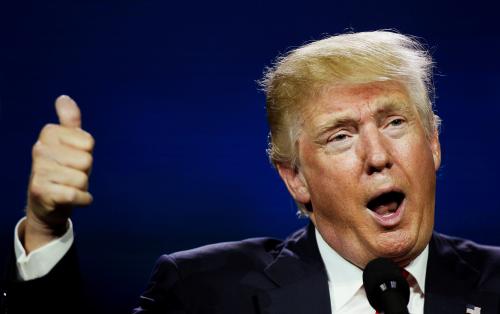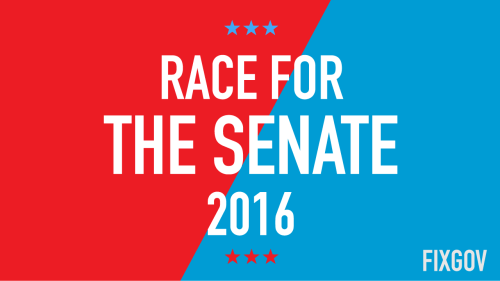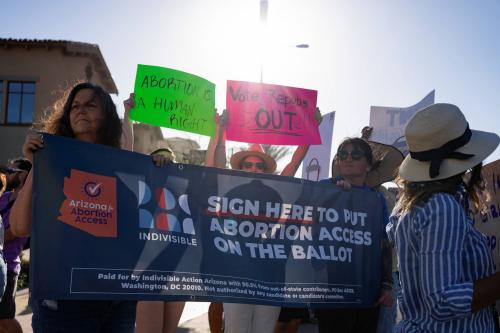Lilly J. Goren is a Professor of Political Science and Global Studies at Carroll University.
The State of Wisconsin, like so many other states, has a number of interesting electoral components this cycle, including a “re-run” of the 2010 Senate race, with exactly the same candidates, the tormented Speaker of the House of the Representatives, and a Republican electorate that has never been all that keen on the candidacy of Donald J. Trump.
From the outside, most commentators and analysts look at Wisconsin as a “purple” state, with tight races for the ten electoral college votes every four years, and both Democratic and Republican Senators representing the state in Washington, D.C. (including the first openly lesbian senator elected to the U.S. Senate—Tammy Baldwin.) But Wisconsin, politically, is more aptly understood as substantially Democratic in certain parts of the state, and substantially Republican in other parts of the state. Thus identifying the important issues on the campaign trail may be a more complex understanding of what Democratic voters identify as important and what Republican voters identify as important and those issues are not always connected.
That said, Wisconsinites have been quite concerned with job growth, the overall economy and our local economy, and living wages. Wisconsin has had unemployment under 5 percent for almost two years according to the Bureau of Labor Statistics, which is below the national average, but there is great concern about manufacturing jobs staying in Wisconsin, and whether they are going to be paying a living wage. Access to long-term stable employment in Wisconsin has been of great concern to Democrats and Republicans, though perhaps from differing perspectives. The state’s recent tumultuous experiences with regard to the work force, the right to join unions, and concern about employment prospects have all contributed to this issue’s salience during the 2016 cycle.
Healthcare access and costs have also been important issues on the campaign trail this election cycle. And certainly there are parts of the state where issues of race and “othering” along with the role of the police are of great importance.
At the same time, Wisconsin, and especially the state’s conservatives and Republicans, have been paying as much attention to the individual candidates and their personalities, narratives, and the swirl of controversy as they are to the issues themselves. In some sense, the fissures within the Republican Party that have become more marked during this primary and general elections are at work within Wisconsin. Texas Senator Ted Cruz won the GOP presidential primary in early April with 48 percent of the vote, and he carried most demographic groups and was especially strong in the “WOW” counties (Waukesha, Ozaukee, and Washington counties).
There is a real split among Republicans in Wisconsin, with vocal and energized Trump supporters, located in the more northern reaches of the state. At the same time that there is a fairly broad “NeverTrump” coalition that includes local radio personalities, as well as very grudging endorsements of Mr. Trump from popular Republican officeholders in the state, including House Speaker Paul Ryan, Senator Ron Johnson, and Governor Scott Walker (who dropped out of the presidential race essentially to help keep Trump from the nomination—though he also helped with Governor Mike Pence’s debate preparations by standing in for Tim Kaine). Governor Mike Pence’s first “solo” campaign stop after he was nominated as Donald Trump’s running mate was to Waukesha, Wisconsin, where he returned again in September. Speaker of the House Paul Ryan was supposed to campaign in Wisconsin with Trump in early October, but after the Access Hollywood tape was released, Ryan said he would not campaign at all with Trump, in Wisconsin or elsewhere. Senator Ron Johnson has also chosen not to campaign with Trump when Trump has come to Wisconsin to campaign, and Johnson has been quite circumspect in not mentioning Trump’s name at campaign appearances or during the debates against Russ Feingold.
While Walker, Ryan, and Johnson have said they will vote for the Republican nominee, a lot of the tense internal GOP politics in Wisconsin circles around Trump, who was rejected in the primary and many of those who rejected him in April have not necessarily warmed to him as the general election has progressed. (Trump carried 35 percent of the GOP vote, and Gov. John Kasich garnered 14 percent.) Whether these tensions will ultimately influence the outcome of the presidential race for Wisconsin’s ten electoral votes remains to be seen, but there are certainly mixed signals being sent to voters from the various high-profile Wisconsin elected officials in the GOP.
On the Democratic side, Hillary Clinton also lost the primary election in April to Senator Bernie Sanders. In contrast to the difficulties that have followed Donald Trump’s visits to Wisconsin to campaign with local and statewide politicians, Hillary Clinton’s campaign has dispatched quite a few surrogates to campaign for her in the Badger State. Senator Bernie Sanders was here in early October; Tim Kaine, his wife Anne Holton, Chelsea Clinton, New York City Mayor Bill De Blasio, Senator Elizabeth Warren and Bill Clinton have all come to Wisconsin to campaign for Hillary Clinton and for Russ Feingold in his Senate race against Ron Johnson. While Clinton has been to Wisconsin, she has not campaigned here since before the Democratic convention.
There are a variety of interest groups and organizations that have some influence in Wisconsin. As already noted, the national GOP, headed by Wisconsinite Reince Priebus, and by the Speaker of the House Paul Ryan, has some strong connections in Wisconsin. At the same time, the RSCC has recently pulled funding of ads to support Ron Johnson’s reelection bid. Johnson has distanced himself from Donald Trump and his campaign, but has indicated that he will vote for Trump. Non-party money is coming into the state to support both the Johnson and the Feingold campaigns.
Both Johnson and Feingold found that a substantial percentage of the electorate did not know who they were when they started to campaign more vigorously in the spring for the Senate seat that Johnson currently holds. And even in the latest round of polls in October from Marquette University, Senator Johnson continues to be less known to Wisconsin voters: 23 percent of Wisconsin voters have indicated that they don’t know enough about him to have an opinion about him, while only 16% say this of former Senator Russ Feingold.[2] The Senate race between Johnson and Feingold has tightened since the spring, and this race may decide which party has a majority and thus leadership of the Senate in the new Congress in January.
The presidential campaigns are operating very differently in Wisconsin in the general election. The Senate race and some of the other down ballot races are also operating in these fairly distinct political spheres.
Thanks to Craig Gilbert, Washington Bureau Chief, Milwaukee Journal Sentinel &USA TODAY Network, for thoughtful insight and suggestions about the Wisconsin political landscape.
2 http://www.wpr.org/who-ron-johnson-wisconsinites-chime-why-incumbent-lacks-name-recognition





Commentary
The Wisconsin situation in 2016
November 6, 2016